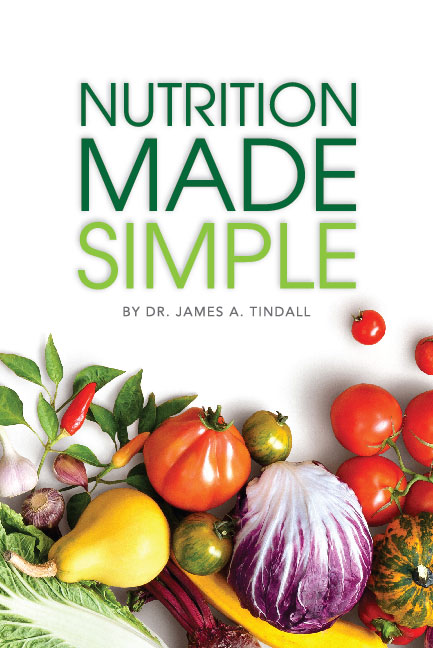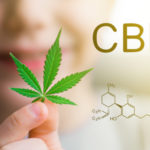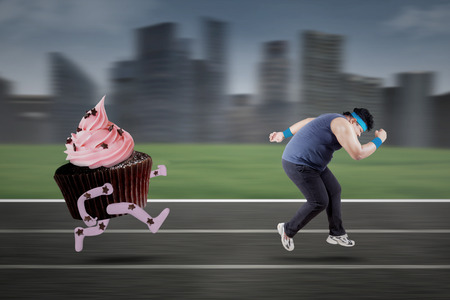Whats holding you back? Have you read other sections of our site? If you haven’t gotten into the battle of fat loss yet, you’ll want to separate the fact from the hype and Hype and Fiction. So, begin here!
Hype and Fiction: Fad diets work for permanent weight loss.
Fact: Fad diets often promise to help you lose a lot of weight quickly, or tell you to cut certain foods out of your diet to lose weight. Although you may lose weight at first while on these kinds of diets, they can be unhealthy because they often keep you from getting all the nutrients that your body needs. Fad diets may seriously limit or forbid certain types of food, so most people quickly get tired of them and regain the lost weight.
Research suggests that losing 1/2 to 2 pounds a week by eating better and exercising more is the best way to lose weight and keep it off.
By improving your eating and exercise habits, you will develop a healthier lifestyle and control your weight. You will also reduce your chances of developing heart disease, high blood pressure, and diabetes.
Hype and Fiction: Skipping meals is a good way to lose weight.
Fact: Your body needs a certain amount of calories and nutrients each day in order to work properly. If you skip meals during the day, you will be more likely to make up for those missing calories by snacking or eating more at the next meal. Studies show that people who skip breakfast tend to be heavier than those who eat a nutritious breakfast.
A healthier way to lose weight is to eat many small meals throughout the day that include a variety of nutritious, low-fat, and low-calorie foods.
Hype and Fiction: “I can lose weight while eating anything I want.”
Fact:This statement is not always true. It is possible to eat any kind of food you want and lose weight. But you still need to limit the number of calories that you eat every day, usually by eating smaller amounts of food. When trying to lose weight, you can eat your favorite foods–as long as you pay attention to the total amount of food that you eat.
You need to use more calories than you eat to lose weight. Maintaining a constant weight is all about balances: Body weight = calories input minus calories output!
The best way to lose weight is to cut back on the number of calories you eat and be more physically active.
Hype and Fiction: Eating after 8 p.m. causes weight gain.
Fact: It doesn’t matter what time of day you eat–it’s how much you eat during the day and how much exercise you get that make you gain or lose weight. No matter when you eat your meals, your body will store extra calories as fat. If you want to have a snack before bedtime, make sure that you first think about how many calories you have already eaten that day.
Try not to snack while doing other things like watching television, playing video games, or using the computer. If you eat meals and snacks in the kitchen or dining room, you are less likely to be distracted and more likely to be aware of what and how much you are eating. (If you want to snack while watching TV, take a small amount of food with you–like a handful of pretzels or a couple of cookies–not the whole bag.)
Hype and Fiction: Certain foods, like grapefruit, celery, or cabbage soup, can burn fat and make you lose weight.
Fact: No foods can burn fat. Some foods with caffeine may speed up your metabolism (the way your body uses energy, or calories) for a short time, but they do not cause weight loss.
The best way to lose weight is to cut back on the number of calories you eat and be more physically active.
Hype and Fiction: Natural or herbal weight-loss products are safe and effective.
Fact: A product that claims to be “natural” or “herbal” is not necessarily safe. These products are not usually tested scientifically to prove that they are safe or that they work. Some herbal or other natural products may be unsafe to use with other drugs or may hurt people with certain medical conditions. Check with your doctor or other qualified health professional before using any herbal or natural weight-loss product.
Hype and Fiction: Nuts are fattening and you shouldn’t eat them if you want to lose weight.
Fact: Although high in calories and fat, most (but not all) types of nuts have low amounts of saturated fat. Saturated fat is the kind of fat that can lead to high blood cholesterol levels and increase the risk of heart disease. Nuts are a good source of protein and fiber, and they do not have any cholesterol. In small amounts, nuts can be part of a healthy weight-loss program. (A 1-ounce serving of mixed nuts, which is about 1/3 cup, has 170 calories.)
What is a serving anyway?
A serving =
1 medium apple or orange (no bigger than a tennis ball) or banana
1/2 cup of chopped, cooked, or canned fruit
1/4 cup of dried fruit
3/4 cup of fruit or vegetable juice
1 cup of raw leafy greens (a little smaller than a softball)
1/2 cup of cooked vegetables
Hype and Fiction: Eating red meat is bad for your health and will make it harder to lose weight.
Fact: Red meat, pork, chicken, and fish contain some saturated fat and cholesterol. But they also have nutrients that are important for good health, like protein, iron, and zinc.
Eating lean meat (meat without a lot of visible fat) in small amounts can be part of a healthy weight-loss plan. A serving size is 2 to 3 ounces of cooked meat, which is about the size of a deck of cards. Choose cuts of meat that are lower in fat such as beef eye of the round, top round, or pork tenderloin, and trim any extra fat before cooking. The “select” grade of meat is lower in fat than “choice” and “prime” grades. However, regardless of choice, red meats should be eaten sparingly.
Hype and Fiction: Fresh fruits and vegetables are more nutritious than frozen or canned.
Fact: Most fruits and vegetables (produce) are naturally low in fat and calories. Frozen and canned fruits and vegetables can be just as nutritious as fresh. Frozen or canned produce is often packaged right after it has been picked, which helps keep most of its nutrients. Fresh produce can sometimes lose nutrients after being exposed to light or air.
Hype and Fiction: Starches are fattening and should be limited when trying to lose weight.
Fact: Potatoes, rice, pasta, bread, beans, and some vegetables (like squash, yams, sweet potatoes, turnips, beets, and carrots) are rich in complex carbohydrates (also called starch). Starch is an important source of energy for your body.
Foods high in starch can be low in fat and calories. They become high in fat and calories when you eat them in large amounts, or they are made with rich sauces, oils, or other high-fat toppings like butter, sour cream, or mayonnaise.
Try to avoid high-fat toppings and choose starchy foods that are high in fiber, like whole grains, beans, and peas.
Hype and Fiction: Fast foods are always an unhealthy choice and you should not eat them when dieting.
Fact: Fast foods can be part of a healthy weight-loss program with a little bit of know-how. Choose salads and grilled foods instead of fried foods, which are high in fat and calories. Use high-fat, high-calorie toppings, like full-fat mayonnaise and salad dressings only in small amounts.
Eating fried fast food (like French fries) or other high-fat foods like chocolate once in a while as a special treat is fine–but try to split an order with a friend or order a small portion. In small amounts, these foods can still be part of a healthy eating plan.
Hype and Fiction: Fish has no fat or cholesterol.
Fact: Although all fish has some fat and cholesterol, most fish is lower in saturated fat and cholesterol than beef, pork, chicken, and turkey. Fish is a good source of protein. Types of fish that are higher in fat (like salmon, mackerel, sardines, herring, and anchovies) are rich in omega-3 fatty acids. These fatty acids are being studied because they may be linked to a lower risk for heart disease. Grilled, baked, or broiled fish (instead of fried) can be part of a healthy weight-loss plan.
Hype and Fiction: High-protein/low-carbohydrate diets are a healthy way to lose weight.
Fact: A high-protein/low-carbohydrate diet provides most of your calories each day from protein foods (like meat, eggs, and cheese) and few calories from carbohydrate foods (like breads, pasta, potatoes, fruits, and vegetables). People often get bored with these diets because they crave the plant-based foods they are not allowed to have or can have only in very small amounts. These diets often lack key nutrients found in carbohydrate foods.
Many of these diets allow a lot of food high in fat, like bacon and cheese. High-fat diets can raise blood cholesterol levels, which increases a person’s risk for heart disease and certain cancers.
High-protein/low-carbohydrate diets may cause rapid weight loss–but most of it is water weight and lean muscle mass–not fat. You lose water because your kidneys try to get rid of the excess waste products of protein and fat, called ketones, that your body makes.
This is not a healthy way to lose weight!
It overworks your kidneys, and can cause dehydration, headaches, and bad breath. It can also make you feel nauseous, tired, weak, and dizzy. A buildup of ketones in your blood (called ketosis) can cause your body to produce high levels of uric acid, which is a risk factor for gout (a painful swelling of the joints) and kidney stones. Ketosis can be very risky for pregnant women and people with diabetes.
By following a reduced-calorie diet that is well-balanced between carbohydrates, proteins, and fats, you will still lose weight–without hurting your body. You will also be more likely to keep the weight off.
Advertisement: Amazon (click on photo for more info)

Hype and Fiction: Dairy products are fattening and unhealthy.
Fact: Dairy products have many nutrients your body needs. They have calcium to help children grow strong bones and to keep adult bones strong and healthy. They also have vitamin D to help your body use calcium, and protein to build muscles and to help organs work properly.
Low-fat and nonfat dairy products are as nutritious as whole milk dairy products, but they are lower in fat and calories. Choose low-fat or nonfat milk, cheese, yogurt (frozen or regular), and reduced-fat ice cream.
For people who can’t digest lactose (a type of sugar found in milk and other dairy products), lactose-free dairy products can be used. These are also good sources of protein and calcium. If you are sensitive to some dairy foods, you may still be able to eat others, like yogurt, hard cheese, evaporated skim milk, and buttermilk. Other good sources of calcium are dark leafy vegetables (like spinach), calcium-fortified juice, bread, and soy products (like tofu), and canned fish with soft bones (like salmon).
Many people are worried about eating butter and margarine. Eating a lot of foods high in saturated fat (like butter) has been linked to high blood cholesterol levels and a greater risk of heart disease. Some research suggests that high amounts of “trans fat” can also cause high blood cholesterol levels. Trans fat is found in margarine, and in crackers, cookies, and other snack foods made with hydrogenated vegetable shortening or oil. Trans fat is formed when vegetable oil is hardened to become margarine or shortening, a process called “hydrogenation.” More research is needed to find out the effect of trans fat on the risk of heart disease. Foods high in fat, like butter and margarine, should be used in small amounts.
Hype and Fiction: Low-fat or no fat means no calories.
Fact: Remember that most fruits and vegetables are naturally low in fat and calories. Other low-fat or nonfat foods may still have a lot of calories. Often these foods will have extra sugar, flour, or starch thickeners to make them taste better. These ingredients can add calories, which can lead to weight gain.
A low-fat or nonfat food is usually lower in calories than the same size portion of the full-fat product. The number of calories depends on the amount of carbohydrate, protein, and fat in the food. Carbohydrate and protein have about 4 calories per gram, and fat has more than twice that amount (9 calories per gram).
Be a “Sensible” Consumer
If you don’t know whether or not to believe a weight-loss or nutrition claim, check it out! Find out more about nutrition and weight loss by reading the publications listed below, contacting the organizations listed, or talking with a registered dietitian. Learning more about nutrition will help you to make sense of the hype and Hype and Fictions, find out the truth, and practice healthy eating and weight-control habits.
Hype and Fiction: “Going vegetarian” means you are sure to lose weight and be healthier.
Fact: Vegetarian diets can be healthy because they are often lower in saturated fat and cholesterol and higher in fiber. Choosing a vegetarian diet with a low fat content can be helpful for weight loss. But vegetarians–like non-vegetarians–can also make poor food choices, like eating large amounts of junk (nutritionally empty) foods. Candy, chips, and other high-fat, vegetarian foods should be eaten in small amounts.
Vegetarian diets need to be as carefully planned as non-vegetarian diets to make sure they are nutritious.
Vegetarian diets can provide the recommended daily amount of all the key nutrients if you choose foods carefully. Plants, especially fruits and vegetables, are the main source of nutrients in vegetarian diets. Some types of vegetarian diets (like those that include eggs and dairy foods) contain animal sources, while another type (the vegan diet) has no animal foods. Nutrients normally found in animal products that are not always found in a vegetarian diet are iron, calcium, vitamin D, vitamin B12, and zinc. Here are some foods that have these nutrients:
Iron: cashews, tomato juice, rice, tofu, lentils, and garbanzo beans (chick peas).
Calcium: dairy products, fortified soymilk, fortified orange juice, tofu, kale, and broccoli.
Vitamin D: fortified milk and soymilk, and fortified cereals (or a small amount of sunlight).
Vitamin B12: eggs, dairy products, and fortified soymilk, cereals, tempeh, and miso. (Tempeh and miso are foods made from soybeans. They are low in calories and fat and high in protein.)
Zinc: whole grains (especially the germ and bran of the grain), eggs, dairy products, nuts, tofu, leafy vegetables (lettuce, spinach, cabbage), and root vegetables (onions, potatoes, carrots, celery, radishes).
Vegetarians must eat a variety of plant foods over the course of a day to get enough protein. Those plant foods that have the most protein are lentils, tofu, nuts, seeds, tempeh, miso, and peas.
Now that you know the fact from the fiction and hype, you too can lose weight, healthily.






